Citizen Science Training at CPTC
by Marcia Wilson
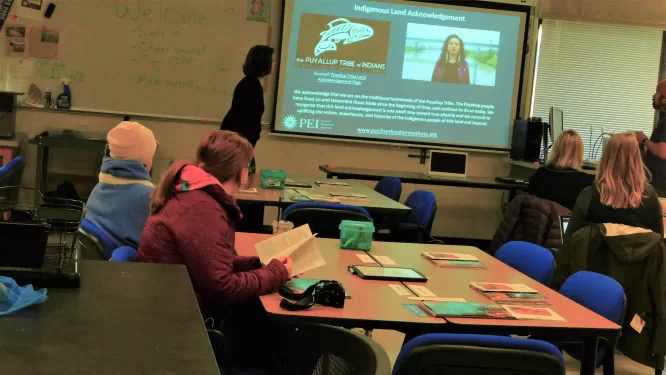
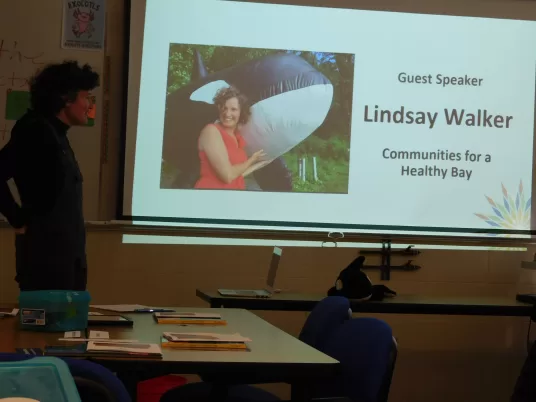
In the middle of January , lucky educators got an email from the Pacific Education Institute’s (PEI) Daniel Cuevas:
I am excited to announce and invite you to an upcoming workshop focusing on salmon migration here in the South Sound through the Explore The Salish Sea Curriculum. This will be a hands-on, place-based learning opportunity for fifth grade educators throughout Pierce and South King counties. PEI is partnering with Tacoma Public Schools, Clover Park Technical College, and Communities for a Healthy Bay to aid you in navigating and implementing Explore The Salish Sea curriculum. At this workshop we will focus on Sample Unit 7: Migration. From this unit, your students will get the chance to gather clues about salmon habitat needs to understand why salmon are struggling in urban streams, and what enhancement projects can be done based on stream survey evidence with a community partner.
On February 10, 2023, several CPTC volunteers joined Dr. Faust, Environmental Science and Technology instructor, for the training. You may note from the photos below that there’s a good reason why waders are always on standby in Dr. Faust’s workspace.
Participants were given their own copy of Exploring the Salish Sea, a workbook, and hands-on stream sampling for salmon studies.
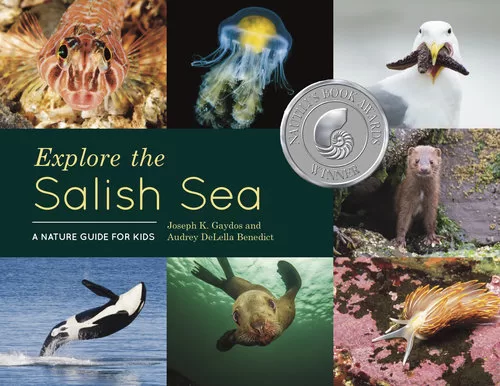
While CPTC owns a considerable chunk of the Flett Creek wetlands, the stream is no longer salmon-supportive, and the work required to restore this watershed to its original status was a topic of discussion. Kobayashi Park was chosen instead, as it is an important confluence of Chambers and Leach Creeks, and supportive of salmon and many other species.
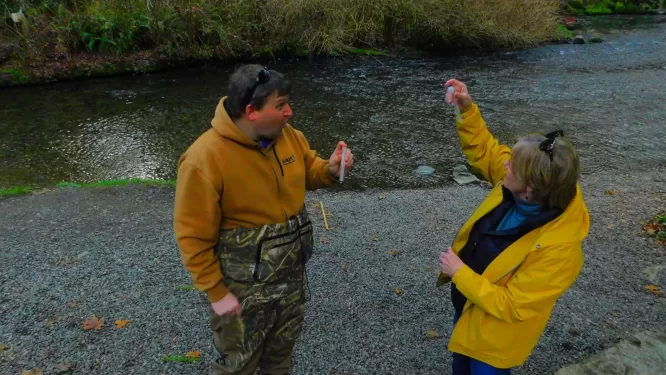
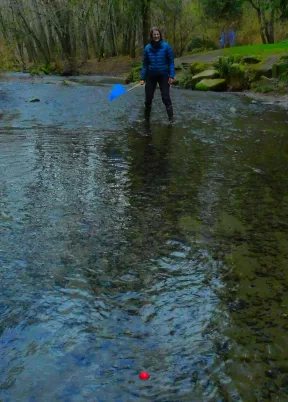
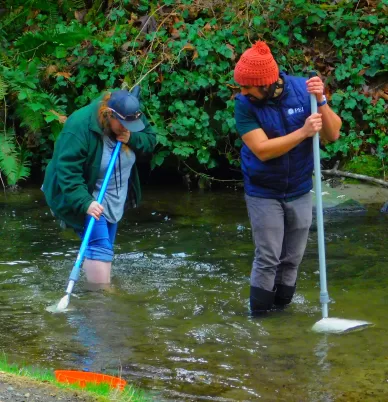
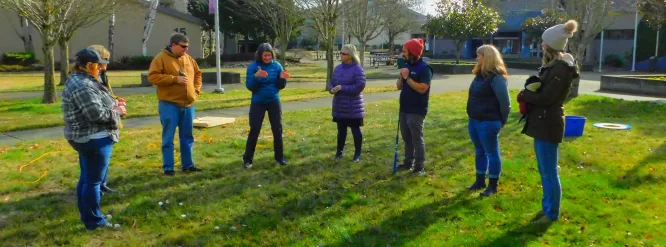
We all appreciated the efforts in crawling out of warm beds on a brisk Saturday to go creek stomping. Despite the elements, Dr. Faust was in his element, from the classroom to the creek. At the end of the day, he led a brief Q&A to help the participants better understand their educational opportunities in seeking science degrees at schools like CPTC, information which was was well received.
Many thanks to Daniel, Mira, Lindsay, and our volunteers for giving the participants a memorable day!
For more pics and another view of the day, see the newsletter written by Pacific Education Institute.